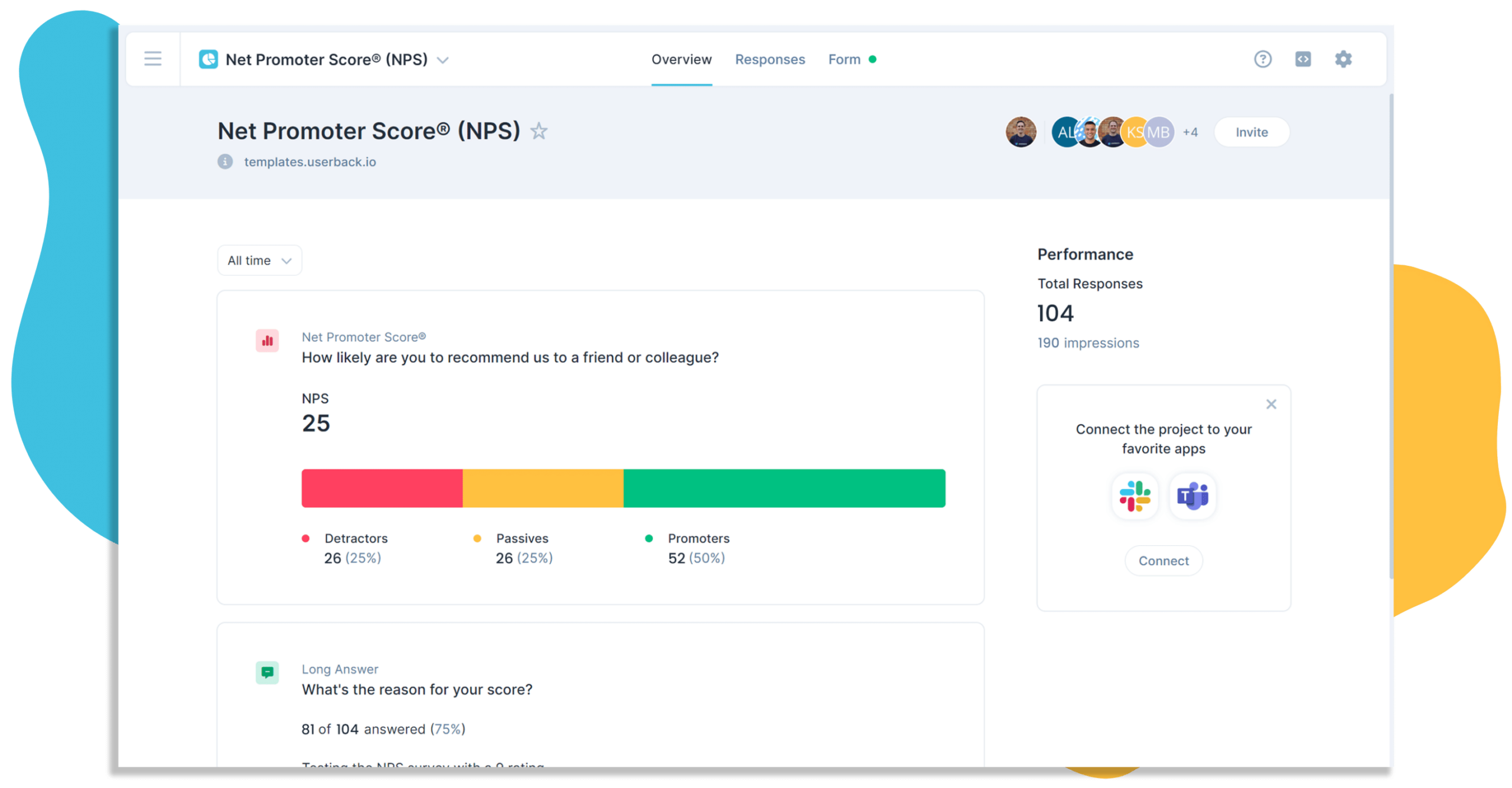
So, what’s churn analysis all about? In the world of Software as a Service (SaaS), customer churn is one of the most critical metrics for evaluating the health and sustainability of a business. While customer acquisition is important, retaining existing customers is often where the real growth potential lies. High churn rates can wreak havoc on a SaaS product team’s strategic planning, revenue forecasts, and long-term business objectives.
In this comprehensive guide, we’ll deep dive into the intricacies of churn analysis, providing actionable insights for SaaS product managers and teams looking to enhance customer retention.
What is Churn Analysis?
Churn analysis is the systematic study of customer attrition or churn and its contributing factors. For SaaS, this involves examining why users discontinue their subscriptions and finding ways to reduce this rate by understanding customer behavior, preferences, and product usage.
Why is it Important for SaaS Product Teams?
SaaS products operate on subscription models, where the value is continuously demonstrated and customers have the option to leave at any time. Churn directly affects Monthly Recurring Revenue (MRR) and the overall health of a SaaS business. By understanding and addressing churn, product teams can stabilize revenue, improve customer satisfaction, and foster long-term growth.
Key Metrics for Churn Analysis
To effectively analyze churn, it is essential to measure it accurately using specific key metrics. These metrics not only quantify customer loss but also shed light on underlying issues that may be driving customers away.
In this section, we’ll explore the most vital churn analysis metrics that SaaS product teams need to track. Monitoring these figures closely will reveal insights into customer behavior, the product’s market fit, and opportunities for improving user experience to decrease churn rates. Here’s 6 of the best:
Customer Churn Rate: The percentage of customers who cancel or do not renew their subscriptions during a given period. It’s a clear indicator of customer satisfaction and product-market fit.
Revenue Churn Rate: Whereas customer churn focuses on the loss of customers, revenue churn reflects the loss of revenue due to cancellations or downgrades. It helps in assessing the financial impact of churn on the business.
Customer Lifetime Value (CLTV): This metric calculates the total revenue a business can reasonably expect from a single customer account throughout the business relationship. A higher CLTV corresponds to a lower churn, as it implies customers find continued value in the service.
Net Promoter Score (NPS): Though indirectly related to churn, NPS gauges customer satisfaction and loyalty. It predicts churn by identifying detractors likely to leave and advocates who are satisfied and give referrals.
MRR Growth/Decay: The net change in monthly recurring revenue, accounting for new sales, existing customer expansions, contractions, and churn. Monitoring this can unveil the real growth trend after accounting for churn.
Trial Conversion Rate: For SaaS with a free trial or freemium model, this metric tracks the percentage of users who become paying customers. A low conversion rate might be an early sign of potential churn.

Identifying Patterns and Root Causes
Identifying patterns and root causes of churn requires a meticulous approach to data analysis. By segmenting customer data and tracking their interactions and usage patterns, product teams can unearth common threads among churned users.
This might include frequency of use, feature engagement levels, customer support interactions, and even feedback provided through surveys or directly upon cancellation. Pinpointing these patterns helps to discern not just who is churning, but why they choose to leave. Understanding the root causes of churn is pivotal for devising effective retention strategies—whether that involves refining the product, improving customer support, or personalizing communication and user experiences.
It’s crucial for SaaS teams to leverage this information in order to anticipate customer needs and pre-emptively address issues before they lead to churn.
Implementing Effective Churn Mitigation Strategies
Implementing effective churn mitigation strategies is the next logical step after identifying the underlying causes of customer departures. The goal is to convert the insights garnered from churn analysis into tangible actions that can improve customer retention. This involves a collaborative effort across the organization, from product development to customer service, to marketing and beyond.
In the upcoming sections, we will discuss several proven strategies that SaaS companies can employ to not only prevent customers from leaving but also to foster loyalty and even turn customers into brand advocates. The focus will be both on proactive measures that enhance the user experience and reactive strategies that respond to customer feedback and behavior patterns.
To help SaaS product managers implement strategies to reduce churn, consider the following actionable list:
1. Enhance Onboarding Processes: Create a comprehensive onboarding experience that educates new users on the product’s value and features, ensuring they understand how to achieve their goals with your tool.
2. Gather Regular Feedback: Use surveys, NPS scoring, and always-on feedback collection tools to understand your customers’ needs and pain points, which can inform product improvements.
3. Offer Exceptional Customer Support: Ensure your support team is responsive, knowledgeable, and capable of solving customer problems quickly to enhance satisfaction and reduce frustration-led churn.
4. Personalize Communications: Tailor your emails, notifications, and other communications to the needs and behaviors of individual users to make them feel valued and understood.
5. Invest in Customer Success: Develop a customer success team to proactively guide customers to get the most value from your product, which can help in identifying at-risk accounts early on.
6. Monitor Engagement: Utilize analytics to track how customers engage with your product and identify those who are not fully utilizing it, so you can intervene with targeted support or information.
7. Implement a Customer Retention Program: Reward loyal customers with discounts, exclusive features, or other incentives to encourage long-term commitments.
8. Improve Product Continuously: Regularly update your product based on customer feedback and market trends to ensure it remains valuable and competitive.
9. Facilitate Easy Upgrades: Make the process of upgrading to higher-tier plans as seamless as possible to encourage growth within your existing customer base.
10. Conduct Churn Exit Interviews: When customers do churn, conduct exit interviews to understand their reasons for leaving, and use this feedback to enhance the product or service for remaining and future customers.
These strategies, when implemented thoughtfully and consistently, can significantly reduce churn rates and bolster the stability and growth of a SaaS business.
Best Practices for Your Churn Analysis
Churn can be a revealing indicator not just of customer dissatisfaction but also of deeper systemic issues within a SaaS product offering. To mitigate churn effectively, it’s essential to move beyond superficial fixes and develop holistic strategies that evolve with customer needs and product changes.
Implementing best practices in churn analysis can provide SaaS teams with a competitive edge, ensuring that they not only keep existing customers but also attract new ones through strong endorsements.
To help, we’re listing 7 fundamental steps you can apply to the strategies listed above and help you get your churn analysis off on the right foot:
1. Establish Clear Definitions: Standardize what constitutes churn in your business model, whether it’s a cancelled subscription or a downgrade to a less expensive plan.
2. Segment Your Customer Base: Different customer segments may have different churn behaviors. Segment your analysis to tailor strategies to specific groups. For example, customers who have been with your product for one year may be more likely to churn than those in their first month.
3. Integrate Qualitative Feedback: Combine data with feedback from customer exit surveys or interviews to understand the context behind the churn. Identifying common themes can help address root issues.
4. Combine feedback with behavior: Don’t just take their word for it, product teams should be combining the results of general feedback and survey responses with session replays to ensure behavior matches responses, and where there has been an issue flagged, dig into the root cause. It may be common, and others simply aren’t reporting it… but they will churn if it continues.
5. Monitor Customer Engagement: Track user engagement metrics such as login frequency, time spent on the product, and number of support tickets raised. Detecting a decline in engagement can be an early indicator of potential churn.
6. Use Predictive Analytics: Leverage predictive models to forecast churn rates and proactively address potential churners before they actually leave.
7. Continuously Review and Refine: Churn analysis is not a one-time task, but an ongoing process that requires continuous review and refinement. As your product evolves, so will customer behavior and preferences. Keep monitoring churn to stay ahead of any changes or trends.
Conclusion
Churn analysis is more than just a requirement for understanding a SaaS business’s health; it’s a tool that, when wielded correctly, can lead to deeper customer insights, enhanced product development, and sustainable, long-term growth. As you move forward with your SaaS initiatives, remember that the effort invested in analyzing and mitigating churn can be the difference between a thriving, resilient business and a struggle for survival.
In a constantly evolving SaaS landscape, continuous churn analysis and adjustment of strategies are key to maintaining a competitive edge. Embrace churn analysis, and watch as it transforms your approach to product development and customer satisfaction, paving the way for a successful, customer-centric SaaS business.
Are you ready to take the next step in analyzing and reducing churn for your SaaS product? Let’s dive deeper into your data and discover how you can make an impact on customer retention. Your customers, and your business, will thank you.
